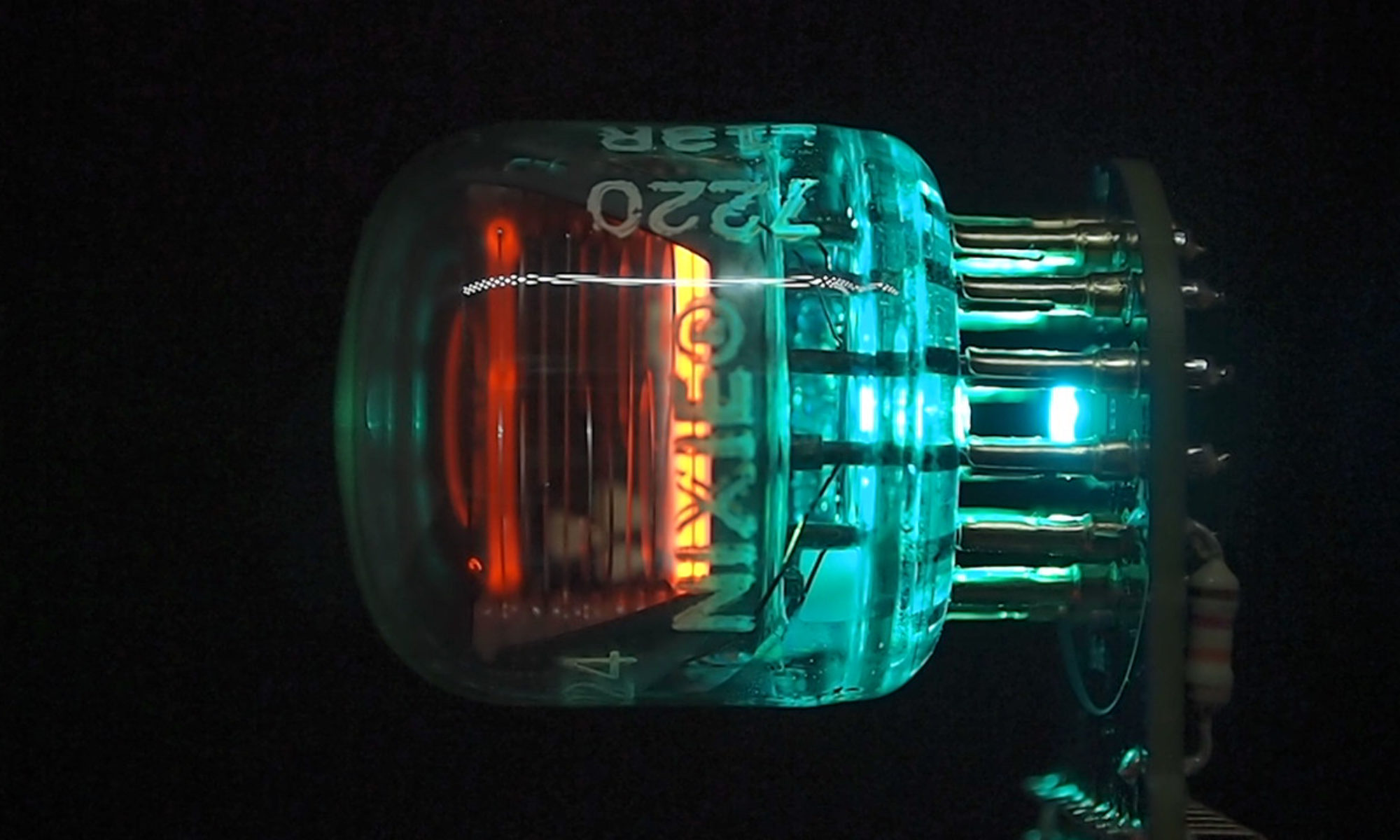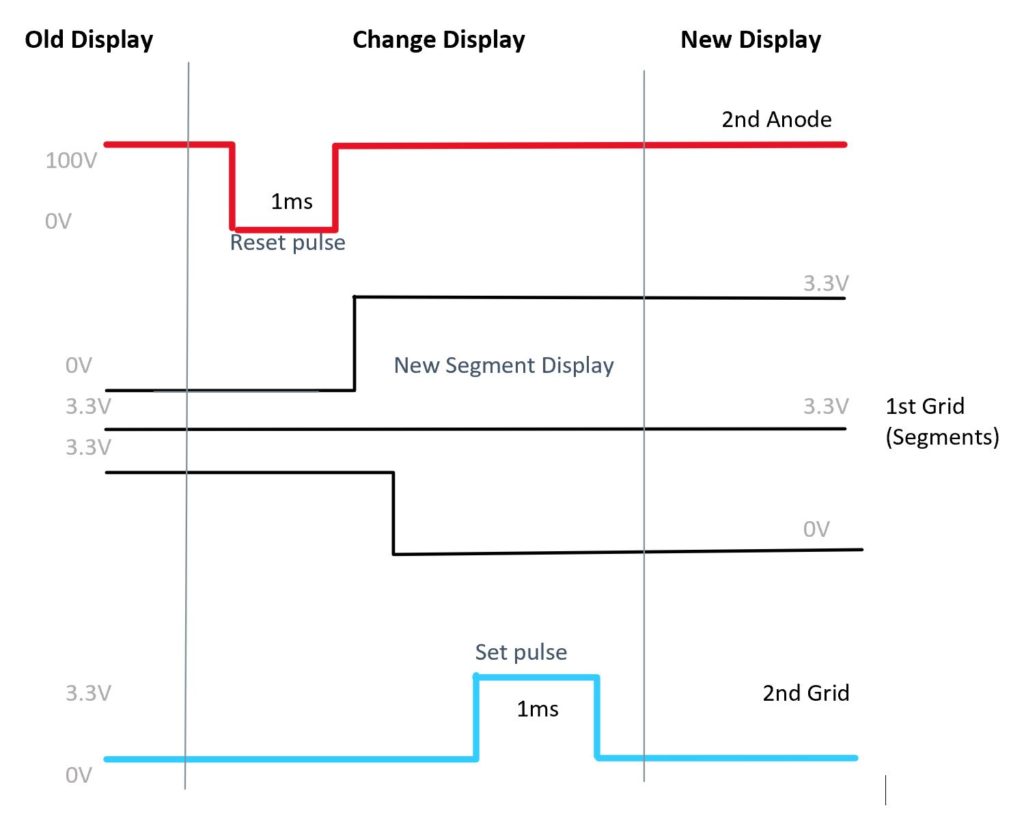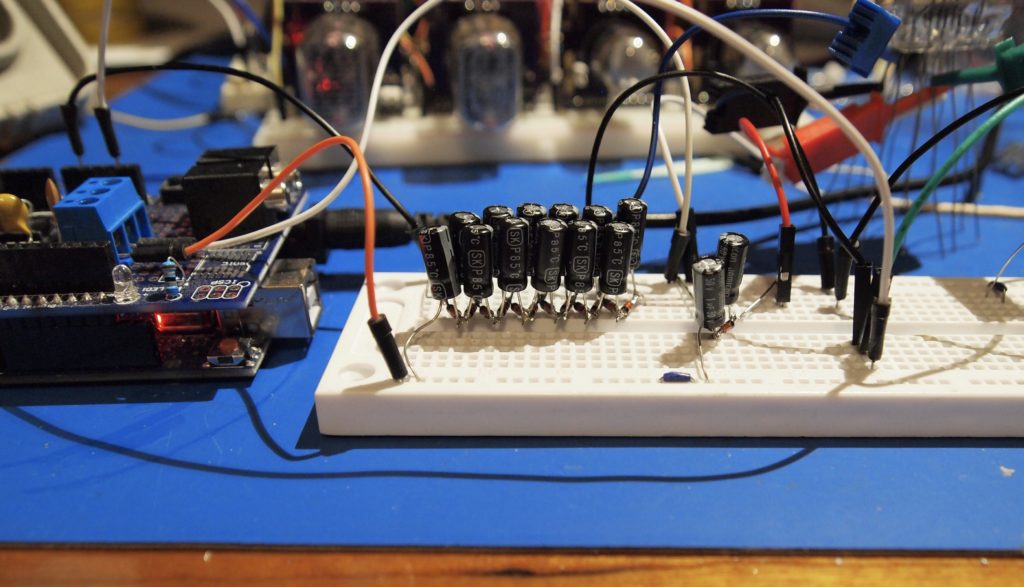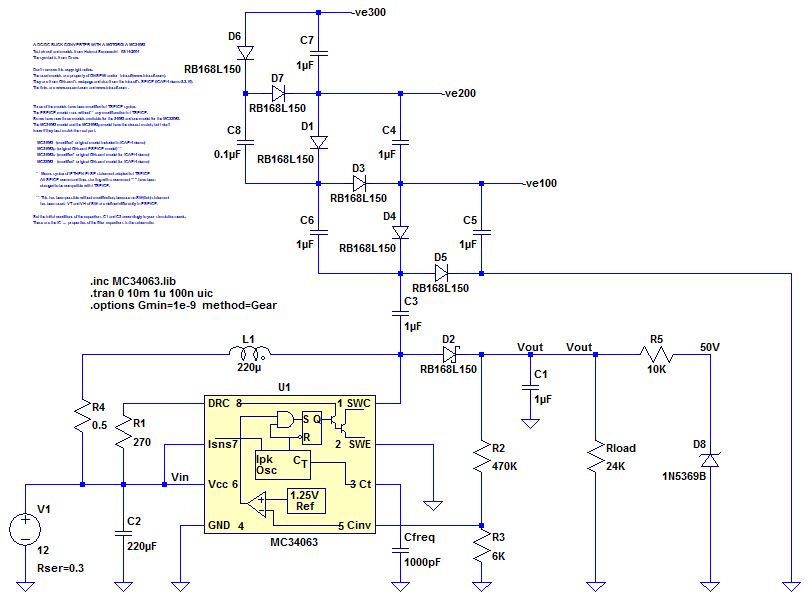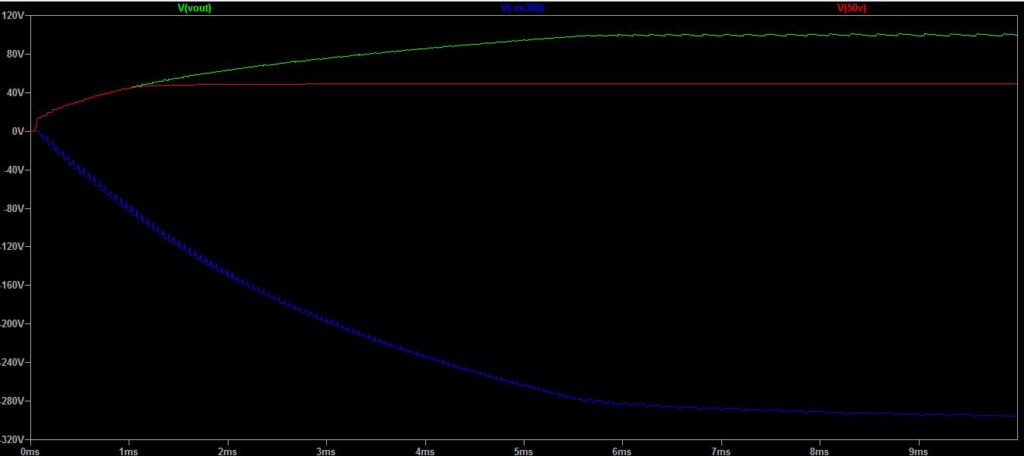In an earlier post, I explored how to light up an ITS1A Thyratron – this is an old seven-segment display device from the former USSR:
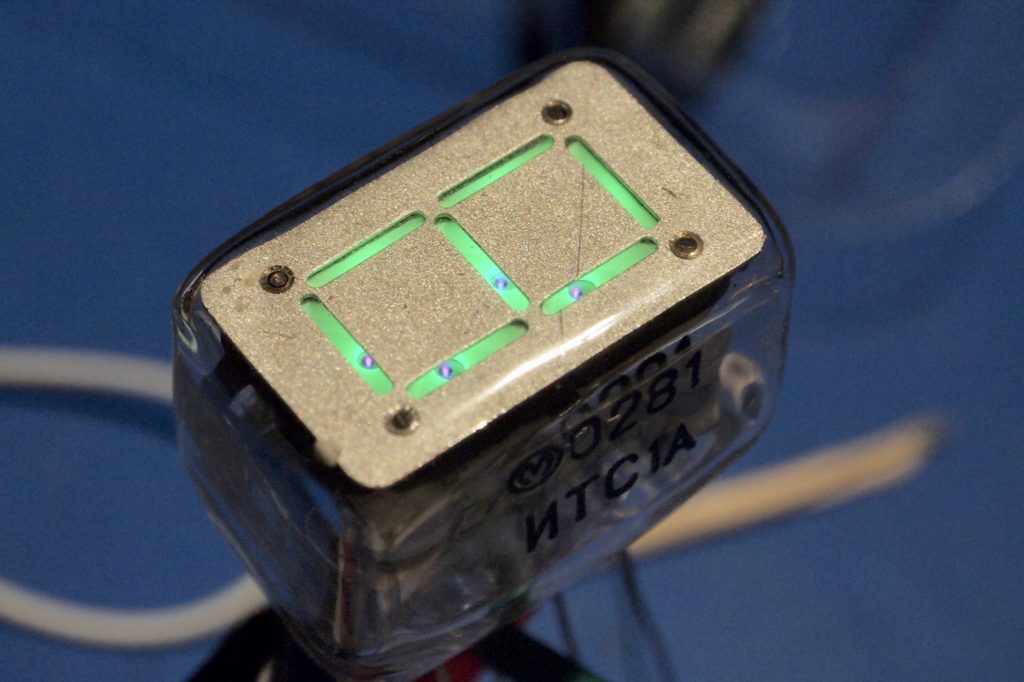
It requires some exotic voltages: -250V, +40V, +100V and logic-level signals for segment control. A high logic level can be anything between +0.4V and +4V, so a +3.3V device is perfect. The other voltages can be obtained from a 50V boost converter driven with a +5V input. I used Cockroft-Walton ladders to get +100V and -250V and a voltage divider to get the 40V. These are the pins on the tube:
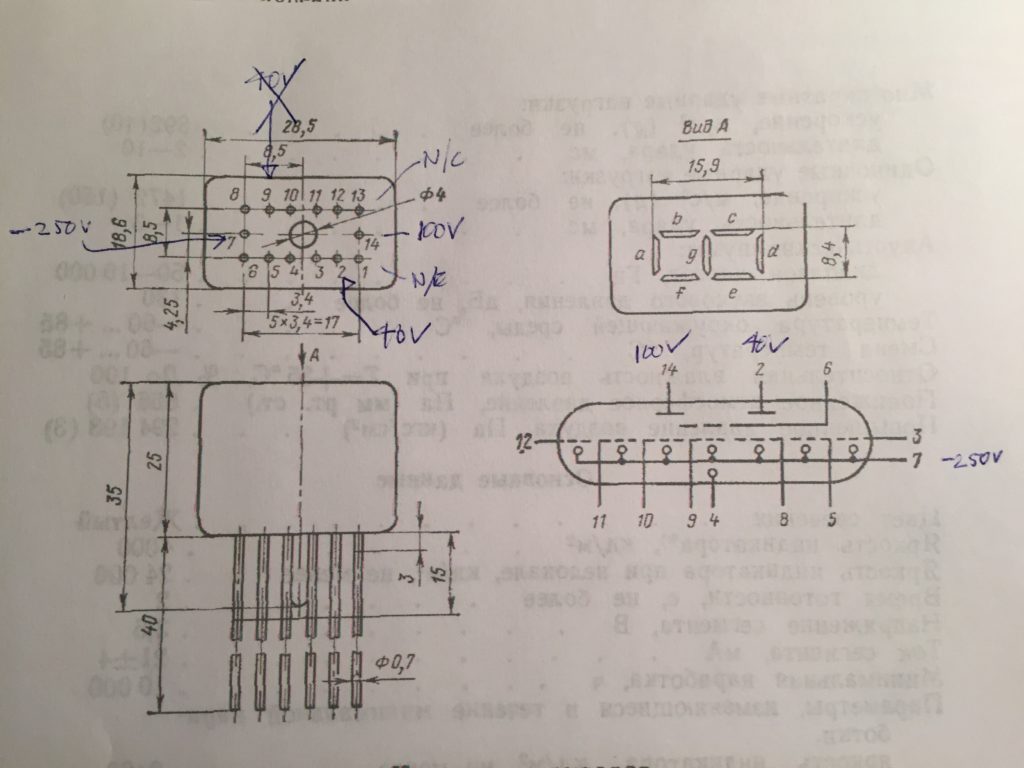
This is a description of the pins:
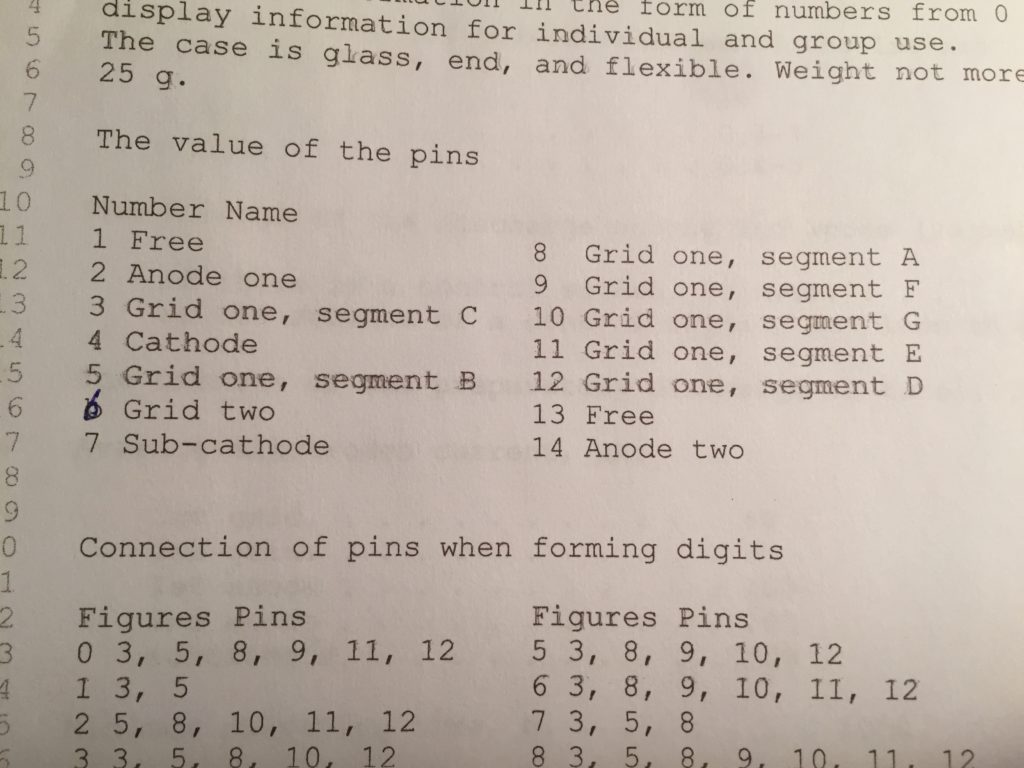
What I didn’t manage to do at the time was figure out how to select which segments get displayed. In my tests, they all lit up. Basically, if the segments are pulled to zero volts, they will be on. If the are raised above +0.4V, they will be off. But only if the other pins are held at the right voltages in the right sequence. Later on I found that I could set the segment voltages, then pull anode one and anode two low for a short period, then high again, then the displayed segments would latch on according to their voltages at the time the anodes were pulled low. The segments will stay that way, regardless of what is done to them, until the anodes are briefly pulled low again.
I suspected that grid two also played a role here, but I was unable to figure it out. Then I came across this archive, which had a circuit diagram and some PIC assembler. In that circuit, the +40V is obtained with a zener which is just connected to ground, with no pull up to keep the voltage at the zener voltage.
(NOTE: This paragraph has been edited from its original). The function of the second grid was revealed looking at the assembler source code. Basically, to set a display you start with the anodes at their set voltages and the second grid above 0.4 volts. Then you briefly pull the anodes to 0V. Then you set the voltages of the segments, then you briefly pull the second grid to 0V (note the line for the second grid below is incorrect, it should be inverted):
Signal sequence for setting the segments of an ITS1A
When the 2nd anode is at 100V, current also flows into the 1st anode (the 40V one) and the zener clamps the voltage to 40V. When the 2nd anode is pulled to 0V, current direction of the 1st anode is reversed, and so it is pulled to 0V too. This is what the datasheet says:
The current of the grids and the 1st anode in the non-conducting state has a positive direction, in the conducting state the direction of the current is changed.
So here is a circuit diagram:
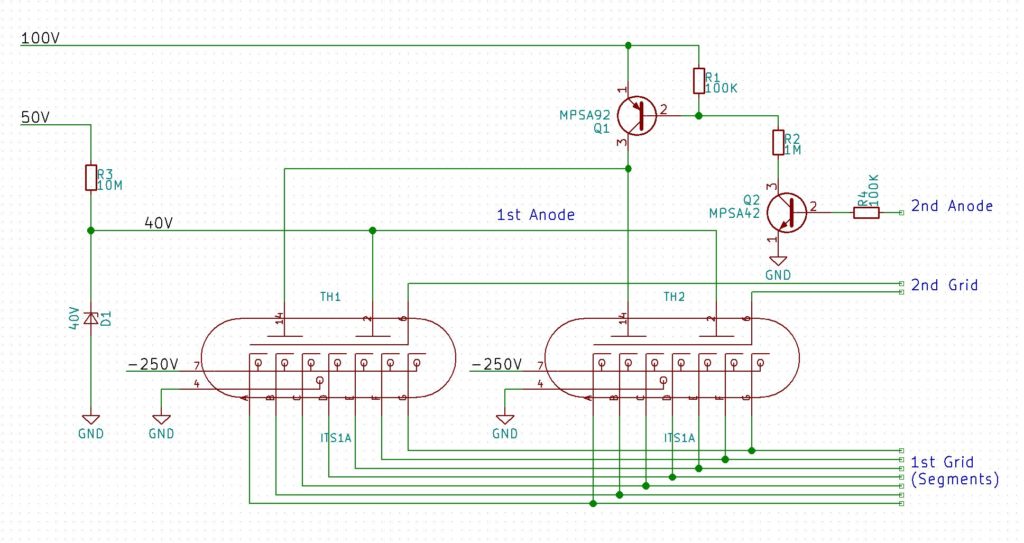
The tubes are multiplexed by setting the value of the 2nd grid individually for each tube. If the second grid on a specific tube is not pulled above +0.4V, it’s display won’t change. Note that the reset pulse only has to happen once, then you can set the display of all the tubes, one at a time by setting the segment voltages and toggling the 2nd grid on the tube(s) you want to change. Repeat the sequence the next time the display changes.
At first I was slightly annoyed that I had ITS1A tubes, which have a maximum logic level of +4.0V, v. The ITS1B tube has a maximum logic level of +5V. But it is actually a good match for modern controllers, with a +3.3V logic level. I used the trusty Wemos D1 mini Pro to test out the circuit above.
